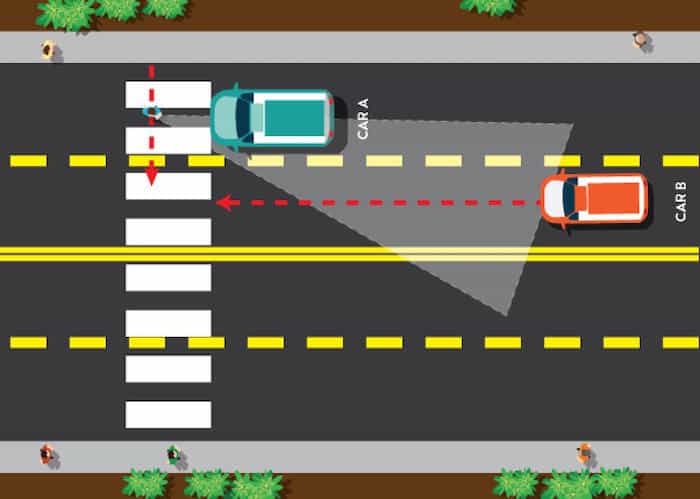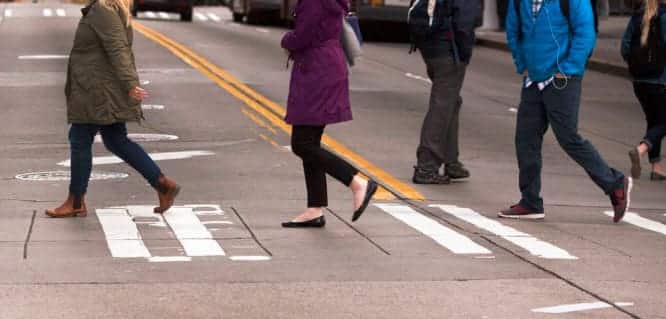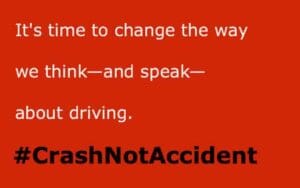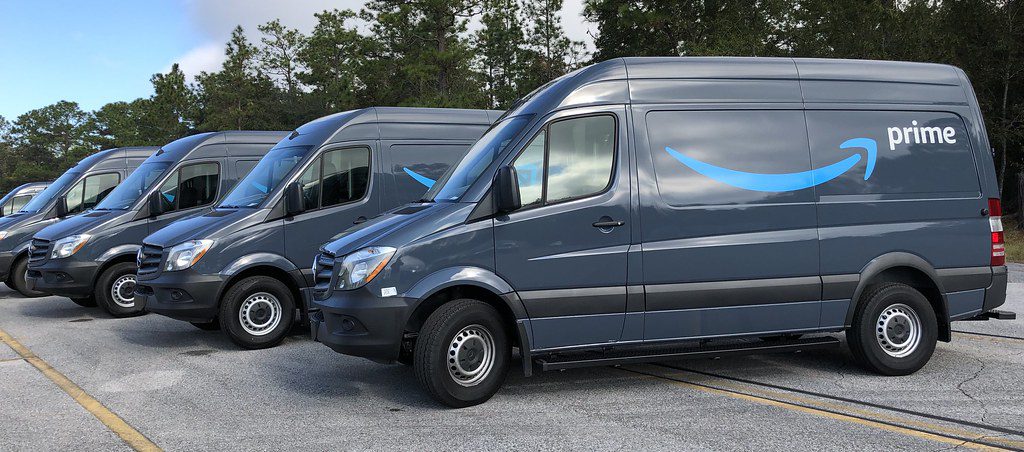On a sunny winter afternoon in Seattle, a kid I’ll call “Marcus” was walking home from middle school.
He was with his classmate and good friend. Marcus’ grandmother dropped the boys off to get a soda; they would walk the familiar route home together.
At a street corner, the boys waited to cross.
An oncoming car slowed and stopped.
As Marcus walked past the stopped car, a van slammed into him.
Marcus was taken to Harborview Medical Center with brutal, life-threatening injuries. His brothers came to the hospital to say their good-byes because of his condition.
Multiple-threat crash:
one vehicle on a multi-lane street stops for a pedestrian to cross,
then another vehicle coming from the same direction strikes the pedestrian.

In the months after the crash, Marcus’ family was struggling to get answers. The community rallied around to support them, and held several town hall meetings.
They were worried about their child’s future, but, also about the dangerous street crossing where he was hurt—where many pedestrians crossed the road every day.
They contacted me to help them investigate.
We researched the history of collisions on that street, the traffic and pedestrian flow.
We talked to people who lived in the neighborhood: most were openly angry about the intersection.
As it turns out, they were absolutely right to be angry.
“No safe place to cross”
We had experts and traffic engineers assess the 5-lane street crossing used by Marcus and others (including kids and elderly neighbors.)
The determination: the street was so badly designed that there was no reasonably safe place to cross.
It put pedestrians in danger every single day.
On behalf of Marcus and his parents, we prepared a pedestrian injury case against the van driver—and the City of Seattle.

Finding justice for Marcus
The van driver’s insurance company agreed to pay the maximum insurance policy limits, which was the right thing to do.
The City of Seattle hotly contested the family’s claim about the dangerous intersection.
Eventually, the Washington State Court of Appeals had to review the issues in the case. The Court’s decision was favorable for Marcus.
Ultimately, the City of Seattle agreed to a settlement rather than push on to trial.
In addition to Marcus’ parents, many in the community shared information and stories about the dangerous intersection. They held community meetings and contacted city council members. Folks demanded that the City of Seattle improve pedestrian safety in the area.
It worked.
The City installed a new traffic signal and crosswalk near the dangerous intersection.
The whole street became safer for pedestrians.
An update on Marcus
As for Marcus, years have gone by since that sunny winter day.
He spent many months in the hospital, and then many more in rehabilitation. He will need medical care and equipment for the rest of his life, which the funds from the lawsuit will provide.
Even so, he constantly pushes himself to improve his condition and to contribute to his community.
He is able to work.
He is proud to be a Special Olympics medalist.
I’m proud to know him, and honored to have helped his family make Seattle a little safer for kids like Marcus.
– Attorney Kevin Coluccio
Clients like Marcus are the reason that we don’t call predictable, preventable collisions “car accidents”.
It’s a “crash”, not an “accident”.




2 Responses
“NO SAFE PLACE TO CROSS” – I agree because as a pedestrian, some drivers do not respect the traffic rules and speed up even on a pedestrian lane.
Every drivers must know when it is their right of way.
Negligence of traffic rules contributes to incidents.
This incidents must be dealt with by law to know which driver is liable.